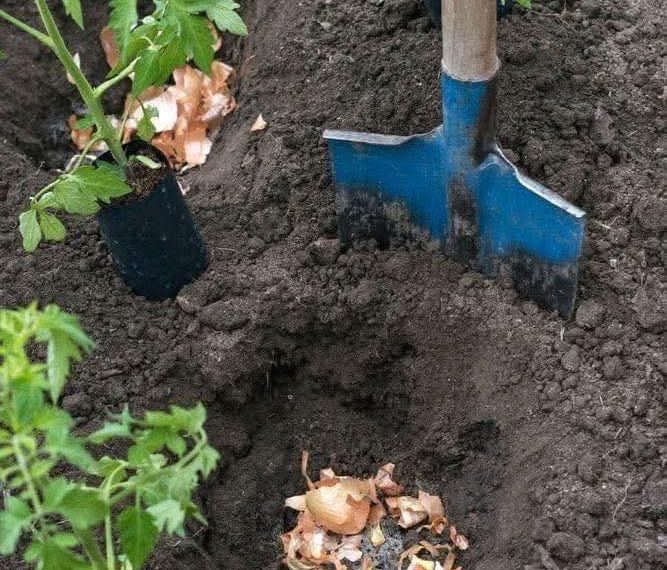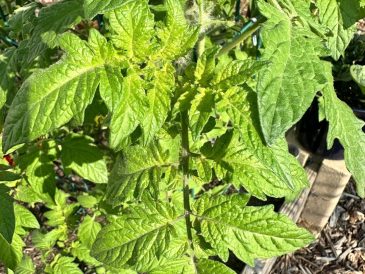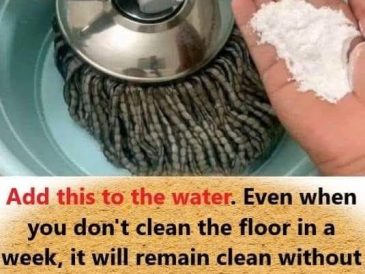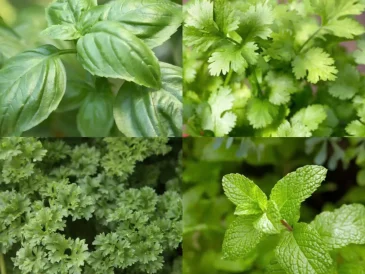8 Things to Put in Your Tomato Planting Hole for Super-Sonic Growth
Tomatoes are one of the most beloved crops in home gardens, and they thrive when given the right start. The planting hole is crucial to ensuring your tomato plants grow strong, healthy, and productive. Here are eight things to add to your tomato planting hole to maximize growth, increase yields, and help the plant thrive:
1. Compost or Well-Rotted Manure
Compost is a must when planting tomatoes. It improves soil structure, enhances water retention, and provides a slow-release source of nutrients. Well-rotted manure is also a great option, adding organic matter that helps the soil retain moisture and provides essential nutrients for your plant’s roots to establish.
- Why it’s essential: Tomatoes are heavy feeders, and adding compost or manure ensures that the plant has all the nutrients it needs right from the start.
2. Bone Meal
Bone meal is a great source of phosphorus, which helps with root development and flower production. It encourages strong root systems and ensures your tomato plants can access the necessary energy for fruit production.
- Why it’s essential: Phosphorus is vital for the early stages of growth, particularly for root development, which leads to stronger plants and better yields.
3. Fish Meal or Fish Emulsion
Fish meal is high in nitrogen and trace minerals that tomatoes need for vigorous growth. It promotes strong, healthy plants with dark green leaves and helps stimulate early growth. Fish emulsion, a liquid form, is great for boosting growth during the growing season.
- Why it’s essential: Fish-based fertilizers encourage healthy leaf growth and overall plant vigor, essential for tomatoes to thrive.
4. Epsom Salt (Magnesium Sulfate)
Epsom salt provides magnesium, an important element for photosynthesis, which helps the plant produce energy. It also enhances fruit production and can help prevent blossom end rot, a common issue for tomatoes.
- Why it’s essential: Magnesium supports chlorophyll production, improving the plant’s ability to absorb sunlight and grow effectively. It also helps improve fruit quality and prevents common tomato deficiencies.
5. Worm Castings
Worm castings are an incredible natural fertilizer packed with nutrients that improve soil health and promote root growth. Adding them to the planting hole will boost beneficial microbial activity and increase the soil’s fertility.
- Why it’s essential: Worm castings provide slow-release nutrients, increase the soil’s organic matter, and promote healthier, more vigorous tomato plants.
6. Crushed Eggshells
Crushed eggshells are an excellent source of calcium, which helps strengthen cell walls and prevents blossom end rot, a common problem with tomatoes. Calcium also helps with root and fruit development.
- Why it’s essential: Tomatoes need calcium to thrive, and adding crushed eggshells helps to supply this important nutrient, leading to healthier fruit and plants.
7. Garden Lime
If your soil is acidic (low pH), adding garden lime will help raise the pH level and make it more neutral, ideal for tomatoes. It also provides calcium, helping to avoid nutrient deficiencies.
- Why it’s essential: Tomatoes prefer a slightly acidic to neutral soil, and if your soil is too acidic, lime helps balance the pH, improving nutrient absorption.
8. Slow-Release Fertilizer
While organic amendments like compost and manure provide nutrients over time, a slow-release fertilizer can give your tomato plants an additional nutrient boost throughout the growing season. Choose one formulated specifically for tomatoes to ensure it provides balanced amounts of nitrogen, phosphorus, and potassium.
- Why it’s essential: A slow-release fertilizer ensures that your tomatoes receive a steady supply of nutrients, supporting their growth all season long.
How to Plant Your Tomatoes for Super-Sonic Growth
Now that you know what to put in the hole, here’s how to plant your tomatoes for maximum growth:
- Dig a Hole: Make sure your planting hole is about 12-18 inches deep. This depth allows the roots to spread out and access all the added nutrients.
- Add the Amendments: Mix your compost, bone meal, fish meal, Epsom salt, and worm castings into the hole. Sprinkle the crushed eggshells around the bottom to provide calcium.
- Add Fertilizer: If you’re using a slow-release fertilizer, mix it in at the base of the hole.
- Place the Tomato Plant: Gently remove the plant from its container and bury it deep enough so that most of the stem is under the soil (tomatoes can grow roots along their buried stem).
- Water Well: After planting, water thoroughly to help settle the soil around the roots and activate the nutrients in the hole.
Extra Tips for Super-Sonic Growth
- Mulch Around the Plant: Use organic mulch like straw or leaves around the base to keep the soil moist and suppress weeds.
- Spacing is Key: Make sure your tomato plants are spaced well apart (usually 18–36 inches, depending on the variety) to allow good airflow and prevent diseases.
- Support the Plants Early: Use stakes or tomato cages to support your plants early in their growth to avoid damage to the stems.
With the right care and the perfect planting hole, your tomatoes will grow stronger, faster, and more abundant, producing an impressive harvest. Happy planting!





